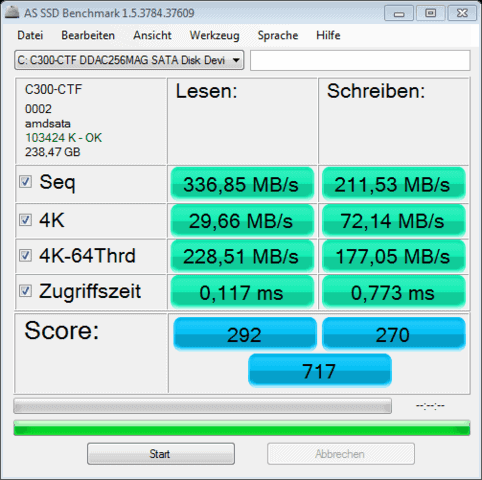Solid State Drive Benchmark

Benchmarks are largely used to compare the performance of items in standardized tests. In computing, they are often used to compare video cards, processors and hard drive performance. Benchmark results are artificial results, which means that they do not necessarily result in a similar real world scenario.
Still, it sometimes pays to run benchmarks. An example would be to see if the speed that other users of the device get is also the speed of the device purchased. And benchmarks can obviously be used to compare hardware with each other.
AS SSD Benchmark is a benchmarking program for Solid Sate Drives. The portable program can run the benchmark on any hard drive that is connected to the computer.
It will perform read and write operations using four synthetic and three transfer rate benchmarks. The synthetic benchmarks are run one after the other, and test the sequential and random read and write performance of the selected solid state drive. In addition to that, the access time of the drive and the overall performance is tested and displayed as an overall score.

The transfer rate benchmarks create three typical folders on the drive, and benchmark the time it takes to copy the files. The first folder contains two big ISO files, the second a lot of small files simulating a progrma folder, and the third a mixture of big and small files, simulating a games folder.
How can this tool be beneficial to the user? For one, it can be used to test the performance of the SSD right after its installation, and then again at a later time to test the performance degradation over time.
Another option is to compare the results with test results that the developer of the software has published on his site.
The speed of the SSD is influenced by other PC components, which needs to be considered before making comparisons.
The SSD benchmark tool is compatible with 32-bit and 64-bit editions of the Windows operating system. A download is offered at the developer's website.
Advertisement




















The best thing the benchmark does is to confirm the ssd is up to snuff after installation and testing later verifies it remains that way. The difficulty with AS SSD is that it results in different scores with an Intel in comparison to a Sandforce drive. the Sandforce is a compressed drive which doesnt quite work with this benchmark program.
Bare in mind you need a motherboard with good SATA 3.0 support to reach the advertised speeds of newer drives, Sata 2.0 speeds hit a brick wall at around 200MB’s